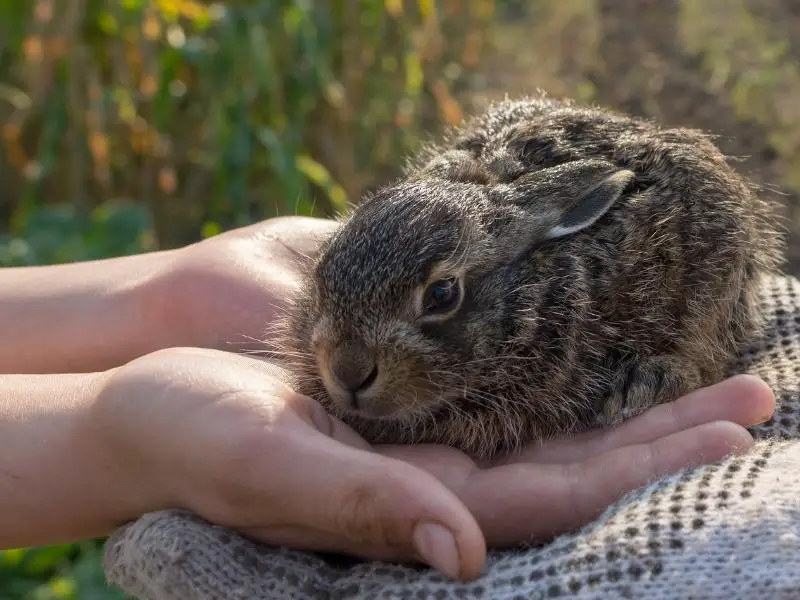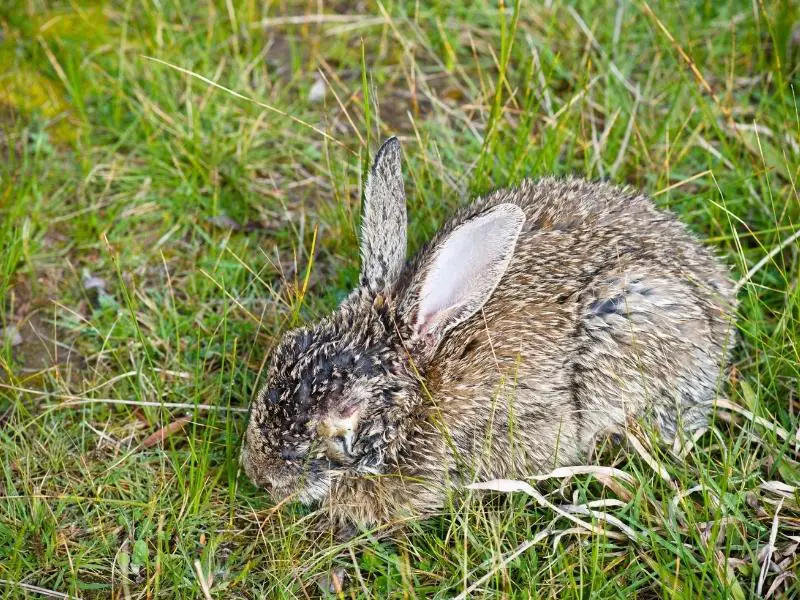Rabbits are known to carry worms, parasites, and serious diseases like rabbit fever, rabbit calicivirus disease, and myxomatosis. If a rabbit (wild or farm-raised) has been infected with myxomatosis, is it safe for you to eat the rabbit?
It’s safe to eat a rabbit that’s been infected with myxomatosis. Myxomatosis isn’t a zoonotic disease; it’s a biological control agent used in Britain, France, and Australia to control the wild rabbit population. Since rabbits carry other diseases, take care when handling and cooking rabbits.
Do you want to learn more about why this virus isn’t a threat to people and why you should handle a rabbit (whether infected or not) with care? We’ve got all the information you need right here for you.
What Is Myxomatosis?
Myxomatosis, also called myxo, is a contagious disease caused by myxoma viruses (of the poxvirus family) that target rabbits.
Myxo was also introduced in the 1950s as a biological control agent in Britain, Australia, and France – albeit illegally – to control the wild European rabbit populations.
Today, the disease is still a threat to wild rabbits and pet rabbits. Some rabbits have also become chronic carriers of myxomatosis, and when an infected buck mates with a doe, the doe can become infected.
The disease can be equated to rabbit ebola if you consider its effects on a rabbit’s body. Acute myxo can be fatal within 10 days of contraction, while chronic myxo is fatal within a few weeks. There are, of course, some rabbits that don’t die when they are infected.
The incubation period is around 3 days, but it can also take as long as 21 days.
Symptoms of myxomatosis in rabbits are:
- Discharge from the nose or eyes
- Ulcers
- Lack of appetite
- Swelling of the eyelids, lips, nose, genitalia, ears, and anus
- Lesions
- Lethargy
- Redness
- Blindness
- Respiratory issues
- Seizures
- Hemorrhaging
There is no treatment for a rabbit with myxomatosis. There is a vaccine that can be given to pet rabbits; however, this isn’t a surefire way to prevent your rabbit from becoming infected with the virus.
How Does a Rabbit Get Myxomatosis?

The transmission of myxomatosis happens via mosquito, fly, flea, fur mite, gnat bites, and direct contact. It isn’t impossible for the virus to spread via air transmission.
Does Myxomatosis Affect Humans?
Myxomatosis doesn’t affect humans. It’s a disease that’s species-specific, in this case, it only affects rabbits (so far).
In 1950, the myxovirus was released in Australia to curb the wild rabbit population.
At that time in northern Victoria, there was an outbreak of human encephalitis. It was thought that myxomatosis might have been the cause of human encephalitis, which is an inflammation of the brain and a deadly disease.
The chairman Ian Clunies Ross and two scientists, Macfarlane Burnet and Frank Fenner, of an Australian government agency, called the Commonwealth Scientific and Industrial Research Organisation (CSIRO) didn’t agree that myxo caused human encephalitis.
All three CSIRO employees injected themselves with the myxoma virus. They didn’t suffer any symptoms of myxo or any other disease and thus proven conclusively that myxoma isn’t the cause of encephalitis.
Can Humans Eat Rabbits With Myxomatosis?
Technically, a human can eat rabbits with myxomatosis. The disease isn’t transmittable to any other species that isn’t a rabbit.
How Do I Know If My Rabbit Is Safe to Eat?
But just because you can eat a rabbit with myxomatosis doesn’t mean you should.
You don’t know what diseases and parasites a wild rabbit can have, so if you like to hunt and skin a rabbit in the field, it is best to wear protective gear as some diseases can be transmitted via air particles.
If you are intent on eating the rabbit, ensure to cook the meat until it reaches an internal temperature of at least 165℉.
Diseases and parasites you should be on the lookout for are:
- Tularemia
Tularemia, also called rabbit fever, is a disease a rabbit contracts via a flea bite. You can get tularemia when you are exposed to the meat and blood of an infected rabbit, and this disease can also spread via air particles.
If you aren’t treated immediately when infected with rabbit fever, it can be fatal.
Check the rabbit’s liver and spleen for lesions, white spots, and swelling. It is best to dispose of the rabbit’s carcass if you see signs of tularemia.
- Rabbit Calicivirus Disease (RCD)
Like myxomatosis, RCD isn’t infectious to people and you can eat a rabbit that has rabbit calicivirus disease.
RCD infects the liver, gut, and lungs of a rabbit, and later on, it causes acute hepatitis. Once hepatitis sets in, the rabbit is usually dead within 48 hours.
RCD doesn’t seem to affect very young rabbits. Rabbits that are 3 weeks old or younger don’t seem to contract rabbit calicivirus disease and only 60% of rabbits between the age of 3 and 6 weeks contract this disease.
You can try to see if a rabbit has RCD by checking the carcass’s lungs and liver. The liver of a rabbit with RCD will be mottled and pale. The lungs will be abnormal-looking, and you’ll see many small red spots. The kidneys may be black and the spleen is often bigger than normal.
If you are desperate, you can eat a rabbit with RCD, but you don’t know what other diseases the rabbit has that you can contract.
- Intestinal Worms
No one would want to eat a rabbit that has intestinal worms, and if you do eat such a rabbit, the worms will make their way to your intestines.
It’s recommended to not eat a rabbit that has intestinal worms.
- Warbles
You can eat a rabbit with warbles. Simply cut these raised bumps off the skin of the rabbit.
My Last Bunny Thoughts
When you hunt wild rabbits, you never know what diseases and parasites the rabbit has been exposed to. So it’s recommended to be careful in how you handle the rabbit. You should also ensure that you cook the rabbit meat well.
The same goes for farm-raised rabbits, especially if you’ve had a wild rabbit on your property since the domestic rabbits can become infected when they come in contact with their wild cousin.
Related Articles:


